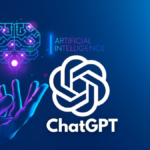Will the next Prime Minister of India be a robot? A BJP robot or a Congress robot, it is entirely likely that a few decades hence, the country’s most important political position may be occupied by a machine. When for so long, the cult of personality and party affiliations has dominated government, many argue that artificial intelligence would serve India better than the current crop of bureaucrats and politicians. Their erratic behavior and impulsive decision making would be best replaced by machines – machines that analyze relevant data thoroughly, weigh the odds, and then come up with the best solution.
Without our knowing it, ‘artificial intelligence’ has sprung up around us, performing tasks we as humans are incapable of. At present however far too many people think that it is only a passing fad promoted by Western scientists with little to do. But whatever the eventual outcome, artificial intelligence is here to stay for the long term. Economists in the West are closely watching and anticipating its future outcome on ordinary life. Will it cause large scale disruptive unemployment, or open up opportunities in new types of scientific exploration? A survey by the Bank of America estimates that in the US, Artificial Intelligence could impact daily life 300 times the transformation that occurred after the industrial revolution. The biggest fear relates to what scientists call Deep Intelligence – a hitherto new phenomenon where computers can be self programmed to perform emotional tasks. Its recent outcome in Japan is a domestic robot that absorbs home attitudes, smiles and bows when it greets the owner, even intervenes in household exchange.
That this evolving super intelligence may pose a threat to the static human brain, only the future will tell, but in India, its prospect is harder to predict. The public use of computer data analysis – the most basic form of artificial intelligence – is in endless statistical correlations in sport. The automated third umpire in a cricket match has the final say in an important decision that cannot be made by two umpires. Will it soon replace the two men standing in the field? A line judge in tennis is overruled by a multi-dimensional camera better than the human eye. Will there soon come a time when a Supreme Court decision will be overruled by a machine better equipped to make constitutional interpretations? Will the future replacement of the reserve bank head by an artificially intelligent governor allow currency devaluations to take place automatically, along with timely interest rate hikes?
In other areas, automation has already taken over. Some time back when Singapore was experimenting with driverless cars, we ordered a driverless cab service. The car arrived bang on time. As the door locks sprung open, the GPS display welcomed us in, and gave directions to the car to proceed. Speeding, slowing and braking when required, it deposited us directly opposite our address. The exact fare – and no tip – was deducted from the credit card. The whole trip went according to script: there was no unnecessary chatter with the driver, no need for directions. After a ‘Have a Nice Day’ from the GPS, we watched the driverless car speed away to its next customer.
Obviously, the point of developing ‘artificial intelligence’ in India would not be for millions of auto and taxi drivers to lose their jobs. Nor would it make sense as a replacement for ordinary intellect. But after my experience of India’s first ‘intelligent’ building outside Delhi, I was not so sure. Built of Italian marble and French glass, with Canadian technology and South Korean supervision, and six times more expensive than the buildings around, the structure used every technology possible to replace humans – electronic control entry, floor activated elevators, and expensive micro-louvers to shade the glass. All without the expenditure of any human energy, the building representative had proudly emphasized. I could hardly point to him all the human energy floating about outside, the thousands of underpaid laborers who had helped erect the building and were now desperate for work.
We seem so awestruck by technology, that its real purpose often gets overlooked. Driverless cars, a domestic robot that can cook and clean, or another that can be a convenient fourth in the club card game, add a useless burden to a culture that is already brimming with unused human intelligence and labour. When robots become the hands of a doctor and help in delicate microsurgery, or scrape the soil off the Mars surface, they are addressing humanly impossible endeavors. In India, robots are already being used in medicine and the auto industry, drones in the military. The Indian Institute of Science is also using underwater robots in the Bay of Bengal to measure currents and salinity to arrive at rainfall predictions for the next monsoon.
All that is fine, but the real research into artificial intelligence is the hope for miracles in other untested arenas. To merely use Artificial Intelligence for what it was intended, is to not exploit its full potential. Voice computing, domestic chores and command recognition may be the direct benefits of Artificial Intelligence in the West, but in places constrained by larger problems of civic and rural disorder, it needs an altogether different focus.
India’s greatest need for Artificial intelligence lies in the area of public services, where robots can become the interface between a public demand and a government’s supply. The voice of a gifted and committed rural teacher – though rare – cannot carry far enough to teach millions of village kids who go to school every day but return empty minded. A smiling robot in a teacher-less school will be punctual and ever-present, charged daily with solar power. In city police stations, manned by incompetent and corrupt cops, a replacement robot would record FIRs without judgment or bribe. Unmanned government hospitals similarly, where mere registration takes its toll on people seeking treatment, would also gain from a robotic interface. Moreover, with capabilities beyond the human brain, where Artificial Intelligence is truly needed is in solving India’s intractable social and political problems: in conflict resolution, in communal violence, and to give coherence to the changing civic order – indeed where human intelligence has been sorely lacking.
– Gautam Bhatia




